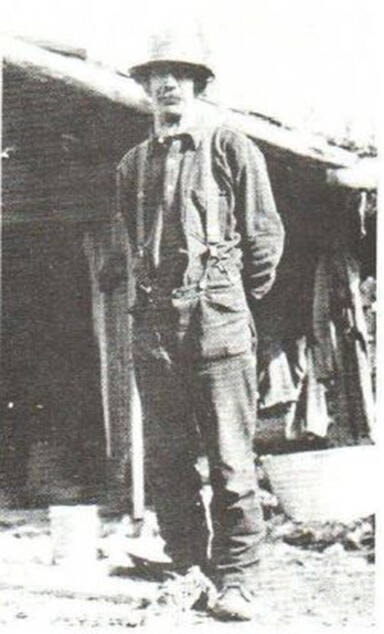Mining has been an important part of this area’s economy for more than 100 years. The industry got its start early in the twentieth century when a man named Charles S. (Charlie) Anderson located a promising ore body north of Burns Lake.
Anderson first encountered the Lakes District on his way to the Klondike. With his mind occupied by thoughts of Yukon gold, he paid little attention to the abundant natural resources of the region at the time. Yet within a decade, having had little luck in Canada’s Far North, he came back to this area and staked the Silver Fox mine.
Located 40 kilometres north of Burns Lake, the Silver Fox claim showed promise. To fully access his find, Anderson needed capital – something he didn’t have – so in 1919, he sold the claim to newly incorporated Taltapin Mining Company Limited of Vancouver.
The firm, according to Burns Lake’s newspaper, the Observer, brought “old world capital” to the project. It staked another half dozen properties adjacent to Anderson’s initial discovery, and within a year, had constructed 12 miles of road and built a mining camp to house its 18 employees.
By 1920, miners on the Silver Fox claim had exposed a number of quartz veins in the 70-foot-high gorge of Anderson (now Pinkut) Creek. The veins, some as wide as five feet, contained variable amounts of silver, copper, lead, and zinc, as well as trace amounts of gold.
In 1921, the company shipped three tons of ore from the site. Assay results from the same period suggested the ore body would yield 3.6 ounces of silver per ton. This may not sound like much, but at the time, an ounce of silver was worth approximately $10 – the equivalent of more than $145 today.
Despite facing a host of logistical problems, including water infiltration that defied the company’s largest pumps, Taltapin Mining Co. Ltd. persevered. By 1928, the primary shaft on the property had reached a depth of 145 feet, in the process exposing several new veins of high-grade ore that yielded as much as 257 ounces of silver per ton. More than 2,000 pounds of ore had also been brought to the surface, but according to company officials could not be shipped to the rail line in Burns Lake due to the “impassible condition of the road.”
News of this latest find again made the front page of Burns Lake’s newspaper. “There is little doubt,” wrote editor Sidney Godwin at the time, “that if sufficient capital can be procured to finance the work on a large scale on the Taltapin properties that the present shareholders are ‘sitting pretty.’”
Godwin’s prediction proved overly optimistic. The following year, the company encountered a problem it couldn’t fix. On October 29, 1929, stock markets around the world crashed, and with them, commodity prices.
Unable to make ends meet, the Taltapin Mining Company surrendered its charter in 1931. It reincorporated in 1932, but couldn’t survive the Great Depression and disappeared for good in 1935.
Anderson, who still held claims in the area, kept the dream alive. He also diversified his financial portfolio by building a fur farm at his home near Taltapin Lake. He must have loved it there, because he seldom left; at one point, according to the Observer, he only made one trip to Burns Lake in six years.
The global economic recovery of 1939 helped BC’s mining industry but not the Silver Fox mine. It remained dormant until 1970, when the owners (who included Mrs. Myrna Paul, Anderon’s granddaughter) showed renewed interest it. The claim was eventually optioned to Windflower Mining Ltd., which did further assay work before walking away from it.
Now abandoned, the Silver Fox mine remains an important part of this area’s history. A piece of machinery from the site, salvaged and restored by local resident George Hamp, is now on display at the Lakes District Museum.
© 2019 Michael Riis-Christianson and the Lakes District Museum Society
